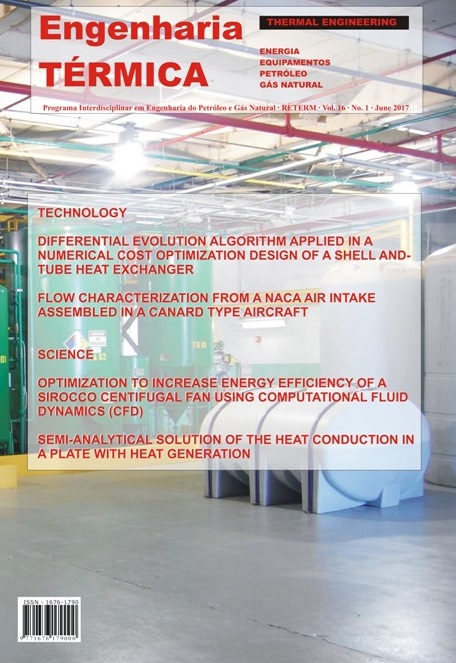NUMERICAL ANALYSIS OF LIQUID FRACTION AND HEAT FLUX IN THE SOLIDIFICATION PROCESS OF ERYTHRITOL IN SPHERES
DOI:
https://doi.org/10.5380/reterm.v16i1.62187Keywords:
phase change materials (PCM), solidification, thermal energy storage, erythritolAbstract
The demand for renewable energy resources and the need for the development of components which increase how it collects, transforms, stores and distributes this energy, emphasizes the importance of improving current technological systems to meet these demands. Phase change materials (PCM) offer great potential in this area. as they can increase energy efficiency in thermal systems as well as save energy by storing solar energy or waste heat from industrial processes, which is made possible by the high amount of energy stored per mass and volume unit, with low temperature variation. Therefore, it is of high importance that the suggested mathematical and numerical models are capable of analyzing its energy performance. The present work uses a mathematical and numerical model of Computational Fluid Dynamics (CFD), capable of reproducing the solidification process of erythritol in spheres of 10, 20, 30 and 40 mm diameters, with temperature differences of 10, 15, 20, 25, 30 and 40 K between the sphere wall and the phase change temperature of the material. The problem is considered two- dimensional and transient. The model consists of mass, energy, momentum and volume fraction equations. The mathematical and numerical model is validated with experimental results from the literature, presenting good agreement between them. After space and time discretization tests, we analyze liquid fraction over time and heat flux at the sphere wall. The results show that liquid fraction suffers a strong reduction in the beginning of the solidification process due to the high heat flux in the early stages. As the solid layer near the wall increases, it causes an increase in thermal resistance, causing a significant reduction in heat flux.
Downloads
Published
How to Cite
Issue
Section
License
Direitos Autorais para artigos publicados nesta revista são do autor, com direitos de primeira publicação para a revista. Em virtude da aparecerem nesta revista de acesso público, os artigos são de uso gratuito, com atribuições próprias, em aplicações educacionais e não-comerciais.



